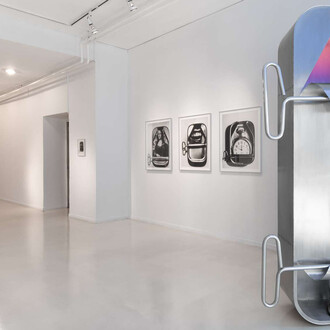Tomaž Godec was born in Bohinjska Bistrica on 15 December 1905. He started helping in his father’s tannery when he was 15 years old, and later he trained as a tanner and went on to open his own small tannery in Bohinjska Bistrica. As an adolescent he was enthusiastic about mountaineering and skiing and at 17 years of age he co-created the rock-climbing society Skala. After his apprenticeship he worked as an assistant tanner in the Kranj leather factory for three and a half years. In 1925 his father died, and his brother Blaž took over the estate, but didn’t manage to pay off the debts. As a result there was a public auction for the tannery, but Tomaž Godec managed to buy it with his and his mother’s savings. Unfortunately they had very little money, but Godec was a hard worker, and trade took off, and he also started a retail business so once again he had time to start taking part in sports activities. In Bohinjska Bistrica they renovated the first ski jump in Yugoslavia, while Godec also gave the initiative to build a new ski jump, designed by a Norwegian, a man called Hansen. He organised several ski races, in which he also participated. In 1928 he became national champion in cross-country skiing and because of it gained a spot in the national team, taking part in many international competitions in which he successfully represented his country. He put most of his efforts into the development of mountaineering, the building of Alpine resorts, and the development of tourism. The ideas to build the hut on the Mountain On Kraj, and the resort on Komna were also his.
It is not known exactly when he entered the Communist Party (CP), but it is a fact that from 1933/34 he became increasingly politically active. In Godec’s tannery the temporary leadership of the Yugoslav Communist Party was established in 1939. This was due to the fact that Josip Broz-Tito received a mandate from the Kominterna (Communist International) during his stay in the Soviet Union (from August 1938 to January 1939) to establish the Central Committee of the Communist Party of Yugoslavia (CC CPY). The members of the up-to-that time Party Leadership were Edvard Kardelj and Milovan Djilas, while the members of the newly established CC CPY were Josip Broz-Tino, Edvard Kardelj, Milovan Djilas, Franc Leskošek, Miha Marinko and Aleksander Ranković; before his arrest in May 1939 Josip Kraš was most likely also a member. The Central Committee met in Godec’s tannery to assess the internal political situation, analyse the parliamentary elections, discuss the possibility for the growth of the Labour Party, strengthening of the unity of the syndicate and unification of all the forces against the threat of fascist aggression.
In 1939 Godec organized the Workers Union in Bohinj, while in 1940 he attended, as a delegate, the 5th National CPY conference in Zagreb. After the enemy occupation in 1941 he was one of the main organizers of the National Liberation Struggle (NOB) in Bohinj, as well as of the armed uprising in December 1941. In March 1942 he was captured by the enemy who knew that they had arrested the leader of the resistance in Bohinj and wanted to force new information out of him. But despite horrific torture in Begunje he told them nothing. The Germans announced, on posters, that he was shot on the 19th of April 1944 in Mauthausen, though most likely he died while being tortured in Begunje.















